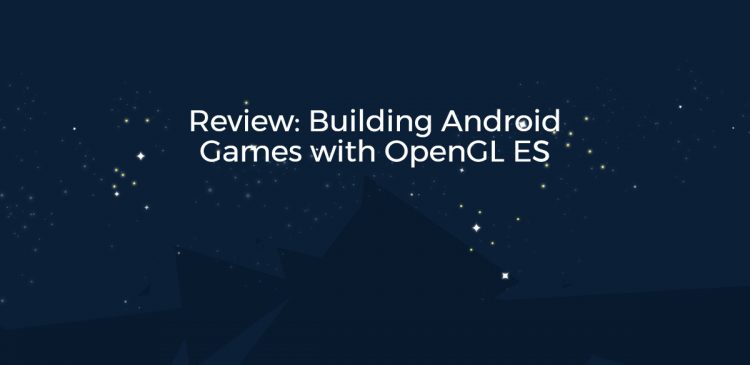Review: Building Android Games with OpenGL ES

A couple of weeks ago I was asked to do a write-up on the Video Course “Building Android Games with OpenGL ES” and now that I’m finished watching it here comes the review.

The course is targeted for beginners and will guide you through a wide variety of topics, such as setting up an Android project, importing resources, math for 3D game programming, writing OpenGL shader programs, texturing, particle systems and much more. The final result of the course will be a clone of the classic Breakout game by Atari. At the end of the course there are also a few notes about actually publishing your game and adding in-app purchases for monetizing your game – one of the most important parts in the development cycle that is often overlooked in other books and courses, so this is a big plus. You can say that the course walks you through from the very beginning of your project to the very end.
The format of the course consists of a series of short videos (roughly 3 minutes each) that tackle a single problem and provide a solution. The whole length of the video course is about 2 hours so it packs a lot of information in a short time.
After watching the first few videos I’d say I liked the format, but that changed when progressing through the course as there are topics that just cannot be explained well in 3 minutes. I was also trying to write code side by side with the video, but often I found myself falling behind and having to rewind the video. What worked for me was to watch the whole video and then do the coding, although sometimes there are parts you’ll need to re-watch, but overall I found this a better approach.
Having such a tight time-constraint for each topic inevitably leads to an awfully fast pace. Somewhere at 1/3rd of the course a lot of videos become copy-pasting snippets following a short explanation which is usually insufficient or you just won’t have enough time to look at the pasted code and understand it. This once again makes you watch parts of the video over and over which becomes annoying at some point. The code companion archive that comes with the course has all the code for each chapter (which compiles and runs out of the box) so there’s a good reference for everything shown in the course.
I was excited about the last few topics which dealt with publishing and monetization, but unfortunately they were too quick as well and didn’t cover a lot of ground. The course is not for monetization, though, so having a chapter on this is a nice bonus, but I found it lackluster nonetheless. Personally, I would have preferred not to have chapters on topics that require a lot of explanations and don’t contribute much value, in favor of a more understandable pace for the rest of the topics.
Overall, due to the short length of the course it only scratches the surface on most topics, and you’ll need to re-watch some videos to understand them. I would recommend this for beginners who want to see the whole process of starting a project, making a game out of it and publishing it on the Android market. It’s ideal for that kind of usage – the course will show you what sub-systems are vital for a game and you’ll gain a better understanding of the big picture. If you need in-depth coverage of some topic, though, you’ll need to look elsewhere. As a final score, I’ll give it 3/5.
